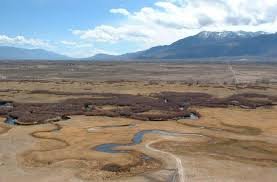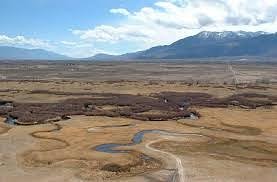Spatially coherent regional changes in seasonal extreme streamflow events in the United States and Canada since 1950
INTRODUCTION
Ongoing changes in the hydrological cycle generated by climate change are expected to increase in the 21st century (1–6). Despite robust monitoring programs, however, complex and variable hydroclimatology in the United States and Canada poses substantial challenges for analysis of streamflow trends resulting from these changes (1, 7–10). Numerous billion-dollar floods and droughts have occurred in the past decade in the United States and Canada, an increase in frequency relative to prior decades (11), prompting concerns that extreme flow events are increasing in frequency. These and less severe hydrologic events have revealed vulnerabilities in river management practices and aging infrastructure that threaten human life, infrastructure, and ecology in river corridors (12). However, the links between changing precipitation patterns and changing streamflow are not straightforward because streamflow across the United States and Canada responds to widely varying precipitation type and timing (5, 13, 14); daily and seasonal temperature fluctuations (15); patterns of vegetation, snowfall, and evapotranspiration (16–18); and drainage network and channel characteristics (14, 16, 19). Thus, to this point, there has been no consensus on whether extreme streamflows are increasing in frequency.
Prior studies have been limited by at least one of several challenges. With some important exceptions [e.g., (9, 20)], previous analyses of streamflow records are mostly restricted to records of annual peak flows, which, in general, are longer than daily streamflow records. However, by focusing only on the annual peak flow, these studies miss entirely changes to extreme low events and may miss important changes occurring on a seasonal basis (1). In addition, studies have taken a range of approaches to aggregating or regionalizing data to improve statistical power, from individual river analysis to watershed boundaries and to political boundaries or subregions determined by latitude/longitude grids. Although some of these groupings may have government planning or enforcement relevance, they often do not reflect hydrologic boundaries and are not defined consistently across different studies. These approaches risk not detecting important, ongoing changes to river systems that have potential consequences for human life, infrastructure, and ecology.
To resolve these existing spatial and temporal hydrologic limitations, here, we develop an objective method for clustering 541 gaged rivers in the United States and Canada into hydrologically coherent groups, minimizing within-group hydroclimatological variability and allowing for sensitive detection of trends on both an annual and seasonal basis. Using this approach to increase the signal-to-noise ratio, we show that increases in the frequency of both high- and low-flow extreme streamflow events are, in fact, widespread. Significant changes in annual high flow have occurred particularly in regions affected by snowmelt. At the seasonal scale, additional coherent changes in the frequency of extreme streamflows have occurred within numerous hydro-regions over the past half-century. These include statistically significant trends toward more frequent extreme high-discharge events in the summer, fall, and winter in hydro-regions affected by snowmelt and a link between drought and increasing frequency of extreme low-flow discharge events on the Pacific coast and Southeast United States. In addition, the hydro-region framework provides the means for evaluating influential hydroclimatological parameters in each hydro-region that is not overly narrow (e.g., individual river analysis), broad (e.g., national-scale analysis), or arbitrary (e.g., analysis within political boundaries). This classification allows for more sensitive detection of ongoing trends by analyzing in aggregate changes to tens to hundreds of rivers likely responding to similar streamflow generating mechanisms, thus minimizing noise due to the inherent natural variability of river systems. The hydro-regions accommodate the diversity of hydrologic regimes in the United States and Canada and, due to their easy transferability to any dataset of daily streamflow records in those countries (e.g., including stations with shorter records), provide a framework for further analysis of flood mechanisms and future trends.
Comments
There are 0 comments on this post








